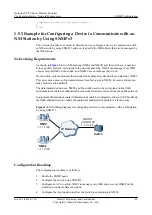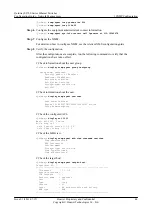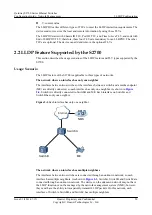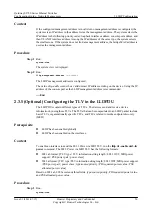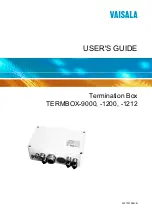
snmp-agent notification-log global-ageout 12
#
return
1.5.3 Example for Configuring a Device to Communicate with an
NM Station by Using SNMPv3
This section provides an example to describe how to configure a device to communicate with
an NM station by using SNMPv3 and how to specify the MIB objects that can be managed by
the NM station.
Networking Requirements
, two NM stations (NMS1 and NMS2) and the switch are connected
across a public network. According to the network planning, NMS2 can manage every MIB
object except HGMP on the switch, and NMS1 does not manage the switch.
On the switch, only the modules that are enabled by default are allowed to send alarms to NMS2.
This prevents an excess of unwanted alarms from being sent to NMS2. Excessive alarms can
make faults location difficult.
The data transmitted between NMS2 and the switch needs to be encrypted and the NMS
administrator needs to be authenticated because the data has to travel across the public network.
Equipment administrator's contact information needs to be configured on the switch. This allows
the NMS administrator to contact the equipment administrator quickly if a fault occurs.
Figure 1-6
Networking diagram for configuring a device to communicate with an NM station
by using SNMPv3
1.1.2.1/24
GE0/0/1
VLANIF100
Switch
1.1.1.1/24
1.1.1.2/24
NMS2
IP Network
NMS1
Configuration Roadmap
The configuration roadmap is as follows:
1.
Enable the SNMP agent.
2.
Configure the switch to run SNMPv3.
3.
Configure an ACL to allow NMS2 to manage every MIB object except HGMP on the
switch and configure data encryption.
4.
Configure the trap function to allow the switch to send alarms to NMS2.
Quidway S2700 Series Ethernet Switches
Configuration Guide - Network Management
1 SNMP Configuration
Issue 01 (2011-07-15)
Huawei Proprietary and Confidential
Copyright © Huawei Technologies Co., Ltd.
42















